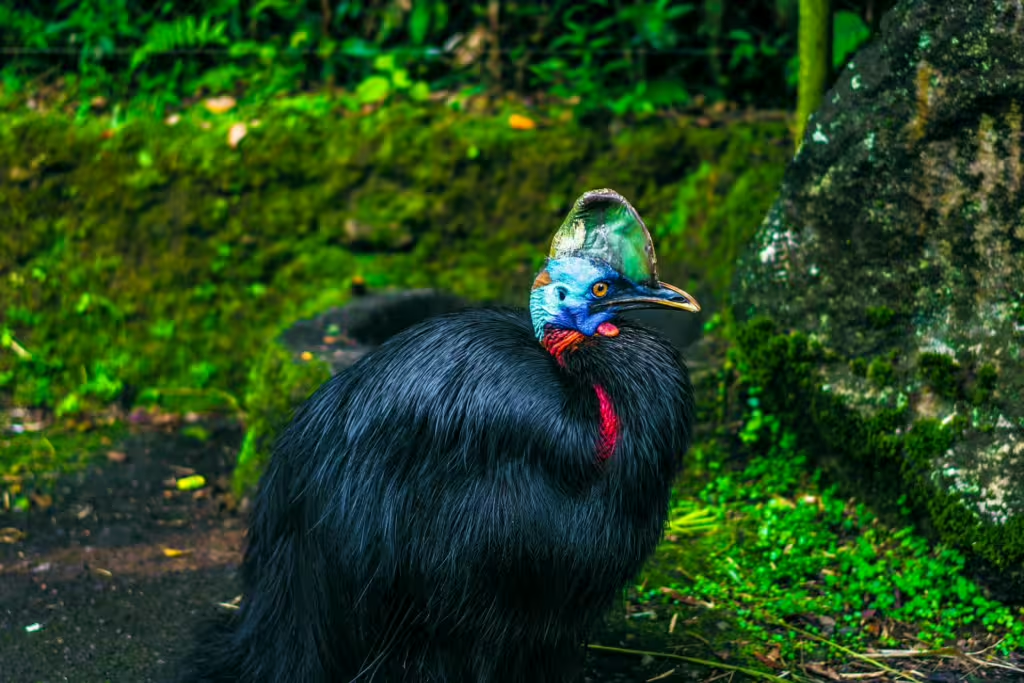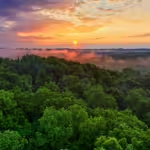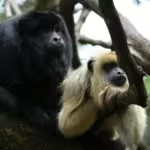When it comes to birds, most of us have a pretty common examples that come to mind. Our brains go to the usual places; twittering songbirds, squawking parrots, or clucking chickens. Considering that those are a rough sampling of the initial imaginings, the secondary ones always tend to be a bit more unusual; animals like waddling penguins, soaring eagles, and loping ostriches. We often have to remember that the second batch are actually birds, despite how different they seem from the most common varieties.
Whatever the shape, size, or songs, birds are generally celebrated for their beauty and ecological importance. What most people don’t really imagine is that any of the familiar birds we live amongst are dangerous in any way. The thing is, whether most of us realize it or not, there are a few birds out in the world today that have garnered something of a reputation for being dangerous to humans. Though these are quite rare, they are nonetheless fascinating.
In this article, we will examine some of these dangerous birds and discuss the behavior and circumstances that have allowed them to interact with us in unexpected ways. We will also delve back into humanity’s past to explore the history of some of the more dangerous, though very extinct, bird species. Finally, we will do what we always do, and examine how human activities have led to the endangerment or outright extinction of several breeds of avian.
Birds That Are Dangerous to Humans
For the most part, you don’t have to worry. Terror birds and dinosaurs have been extinct on our planet for centuries now. Most of today’s birds are harmless and avoid human interaction whenever they can; though there are rare exceptions. Several avian species are known for their defensive behaviors, sharp talons, or even toxic properties that can harm humans if the stars are wrong.
Cassowary (Casuarius)
If dinosaurs still existed, they would probably look like the cassowary, a bird that usually tops this list for good reason. Often referred to as the “world’s most dangerous bird,” this charismatic character is native to the rainforests of New Guinea and northern Australia. “A dangerous animal living in Australia?” You ask with mock surprise. That’s right, dear reader, the world’s most dangerous avian threat is indeed a native of the fabled “Land Down Under.”
We jest, of course, but those who encounter the cassowary learn quite quickly that this large, flightless bird is no joke. Standing over 6 feet tall and weighing up to 150 pounds, this massive bird is also equipped with dagger-like claws on its inner toes. These blades can grow up to 5 inches long and are the cassowary’s most deadly weapon. When threatened, a cassowary can deliver a powerful kick, or series of them, that are more than capable of inflicting severe injuries or causing outright fatalities in the right circumstance.
There are have been many documented cassowary attacks on humans and most of these are the result of people approaching the bird too closely. Some of those poor, injured fools even attempting to feed this modern dinosaur, prompting defensive aggression from the cassowary. Nevertheless, despite its fearsome reputation, the cassowary is largely herbivorous and it remains an essential part of its ecosystem, aiding in seed dispersal for numerous plant species.
Ostrich (Struthio camelus)
The ostrich is the largest living bird, measuring up to 9 feet tall and weighing in between 250 and 300 pounds. This remarkable creature is native to Africa and is known for its incredible speed and powerful legs, which can knock out a lion when they land a proper hit. Now, ostriches are generally not aggressive toward humans, but like any other creature, they can become quite dangerous when threatened. This defensive behavior usually occurs during the breeding season, when passions and reproductive protective urges are high. An angry ostrich can deliver a kick that is, at least, strong enough to break bones, and at best, powerful enough to outright kill a predator. The sharp claws that tip their two-toed feet make their kicks even more lethal.
European Herring Gull (Larus argentatus)
Though this seafaring animal is much smaller than cassowaries or ostriches, European herring gulls are aggressive little buggers. These birds are fiercely protective of their nests and have been known to attack humans when either protecting their offspring or scavenging for food. Many people have observed these types of aggressive behaviors in urban areas where the gulls have adapted to living within the human environment. If you want an example of what an attack by these gulls might look like, imagine Hitchcock’s “The Birds.” These creatures have sharp beaks and can deliver painful pecks, which, while not life-threatening, can cause injuries and, if the movie was any indication, be downright traumatic for the victim.
Pitohui (Pitohui spp.)
Native to Papua New Guinea, pitohuis are one of the only toxic birds known to science. The feathers and skin of these unusual birds contain batrachotoxin, a potent neurotoxin that is also found in the skin and flesh of poison dart frogs. While pitohuis do not actively attack humans, handling them even slightly can result in toxin exposure, leading to symptoms such as numbness and nausea. The only good news here is that even mild exposure cannot kill you, but you certainly won’t be having a good time.
Barred Owl (Strix varia)
Most owls and even eagles, vultures, and other birds of prey are rarely considered dangerous to humans, though, the barred owls might be a rare exception. Isolated incidents involving this normally nocturnal bird of prey have shown that they can become aggressive at times, particularly during nesting season. The birds have sharp talons and beaks, and have been known to dive-bomb intruders they perceive as threats. Even if they don’t accidentally break your neck with their speed and force, their wickedly-sharp appendages can cause quite the contusion.
Extinct Birds That Were Dangerous or Iconic
Throughout the course of human history, our presence has driven many bird species to extinction, including some that may have been quite dangerous, though no less remarkable, in their time. Understanding what caused these losses offers us insight into the delicate balance that exists between humans and avians.
Elephant Bird (Aepyornis)
Native to Madagascar, the elephant bird was one of the largest birds to have ever existed. This animal stood up to 10 feet tall and weighed an astonishing 1,000 pounds or more. Though not directly dangerous to humans, the elephant bird’s immense size and strength would have made it a formidable foe. Sadly, the appearance of early humans on Madagascar was the beginning of the end for elephant birds. These towering ostrich relatives were driven to extinction by hunting and habitat destruction around 1,000 years ago. It is a prime example of the profound impact humans have had on megafauna since we first came onthe scene.
Terror Birds (Phorusrhacidae)
They didn’t call them terror birds for nothin.’ Terror birds are members of a family of flightless predatory birds that lived in South America around 2 million years ago. Though they went extinct way before the first human civilizations first came onto the scene, they did pose a serious threat to early humans and our distant, apelike ancestors. Terror birds came in many different shapes and sizes but most of them could reach heights of 10 feet. Possessed of powerful beaks and sharp talons, these animals were direst descendants of the last dinosaurs and were apex predators of their time.
Great Auk (Pinguinus impennis)
The sad tale of the great auk, a flightless seabird, is one that bears repeating. Though this giant puffin/penguin was not inherently dangerous to humans, its extinction still serves as a cautionary tale about the folly of man. The great auk was once native to the North Atlantic, where they were hunted extensively for their meat, eggs, and feathers. They were hunted so much and so fast, in fact, that by the mid-19th century, that same overexploitation led to the extinction of their entire species. The historical plight of these seabirds mirrors that of the poor dodo bird and both highlight the vulnerability of species when they encounter human exploitation, especially when those species are not perceived as threats.
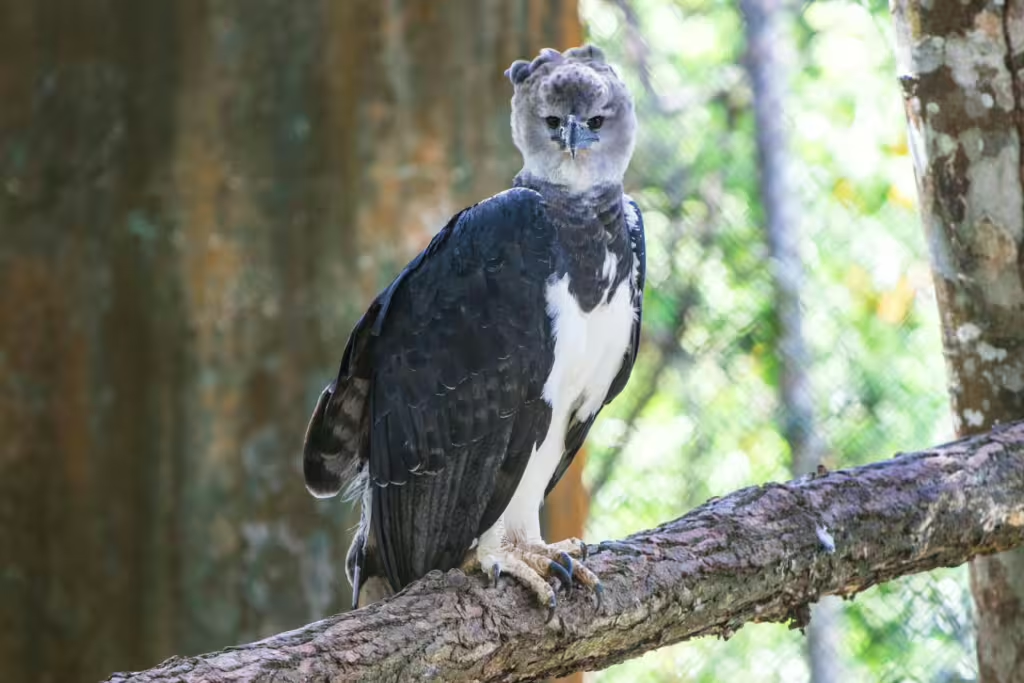
Endangered Birds at Risk Due to Human Activity
As we saw in the earlier section, we have already lost some birds to the perils of time and humanity. Those same concerns exist today. Sure, there are some existing bird species that are potentially dangerous to humans, but far more species face real danger because of humans. Activities such as habitat destruction, climate change, and poaching have the potential to drive these birds to extinction. Even more concerning is the fact that many of these endangered birds play critical roles in their ecosystems.
California Condor (Gymnogyps californianus)
The California condor, one of the largest flying birds in North America, is still critically endangered, even after a massive conservation effort and captive breeding program brought them back from the brink in the 1980s. With a wingspan of up to 10 feet, these scavengers might seem imposing, but they are not at all dangerous to humans. They are, however, absolutely, vital for cleaning up carrion and preventing the spread of disease within their ecosystems. Sadly, habitat destruction, lead poisoning from ingested bullets, and hunting have pushed the species to the very edge of extinction; where they remain perched to this day.
Philippine Eagle (Pithecophaga jefferyi)
Otherwise known as the “monkey-eating eagle,” the Philippine eagle is one of the largest eagles alive today. This bird is, as the name implies, endemic to the Philippines, where it has become critically endangered due to deforestation and hunting. And certainly, this majestic bird’s size and strength could pose a danger to humans in rare cases, but it is not the one at fault in this relationship. Conservation initiatives are in place currently with the aim of protecting the eagle’s dwindling habitat and increase public awareness of its plight.
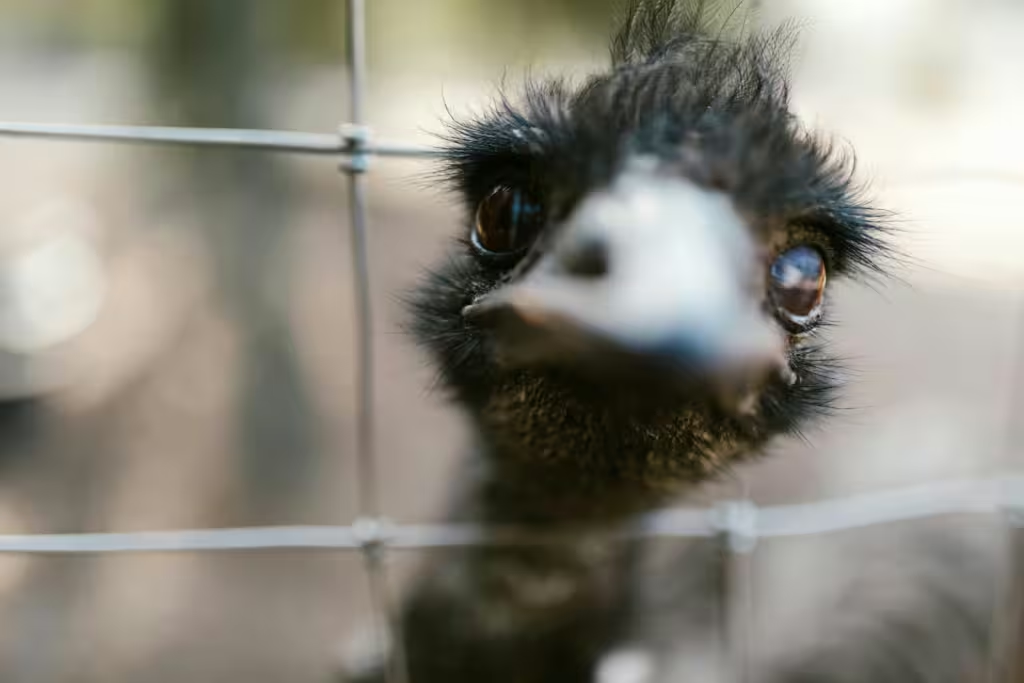
The Emu War
Do you remember the time the Australian army lost a war against wild emu? Well, the good news is that even if you don’t, True Investigator does. The so-called Emu War of 1932 was an unusual conflict between humans and a large population of emus in Western Australia. The events of the conflict directly follow World War I, when many Australian veterans were given land in the rural areas of Western Australia to take up farming. However, the Great Depression and an unexpected surge in emu populations created significant challenges for these farmers.
Drawn by the recently cultivated crops, huge flocks of emus descended on the new farmland and began to ravage wheat fields, trampling fences and destroying crops everywhere they went. Their sheer numbers—estimated to be over 20,000 in the affected areas—and not the birds themselves, are what posed the most threat; not only to the farmer’s crops, but also the farmer’s themselves if they attempted to engage with these creatures.
The farmers asked for help and the Australian government deployed military personnel armed with machine guns. The aim was to cull the emu population by force. Despite their initial optimism, the campaign faced a slew of logistical challenges. Even more fascinating was the fact that the villainous emus proved to be remarkably evasive, often scattering into smaller groups or moving out of range of the talented Australian army gunners.
The result of the campaign was that only a few emus were killed in the first volley, but thousands of rounds of ammunition were lost. As one might expect, the folly of a campaign became a source of ridicule in the press. By December 1932, after at least two unsuccessful attempts, the operation was called off, having failed to make a significant impact on the emu population. So yes, even emus can be dangerous..,when they are found in the tens of thousands.
True Investigator Says…
As you can see, while some birds are perceived as dangerous to humans, the reality is that birds face far greater threats from us than we do from them. Our very presence has led to the extinction or near-extinction of many avian species and our actions continue to threaten ecosystems the world over. The lesson to take from this is that while some creatures may be frightening, impressive, or even dangerous, the most dangerous animal of all is, and always will be, the human being.
Discover more from TrueInvestigator
Subscribe to get the latest posts sent to your email.
